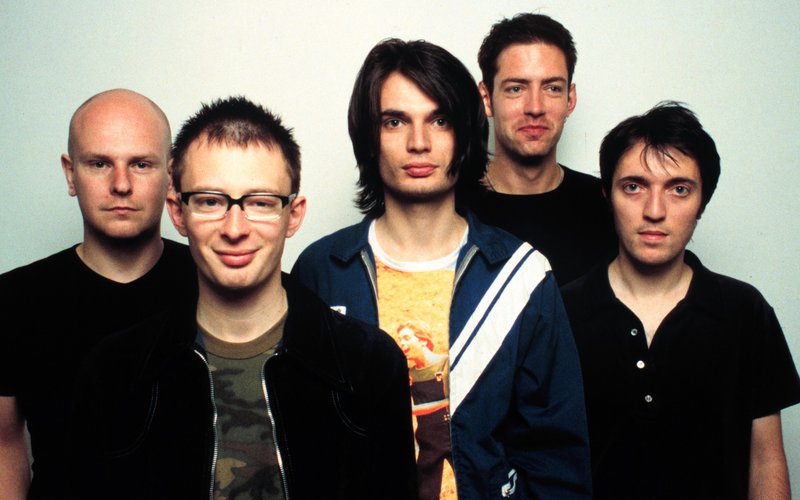
🚨WARNING: For Halloween, KEXP is exploring the horrifying true stories behind some of the creepiest songs we play. Please note, this post contains highly disturbing and graphic content. Please continue at your own risk. 🚨
I am the key to the lock in your house
That keeps your toys in the basement
And if you get too far inside
You’ll only see my reflection
I won't get into how Radiohead's 1997 album OK Computer is considered one of the most important albums of all time, and was even included by the Library of Congress in the National Recording Registry as "culturally, historically, or aesthetically significant." You know all that. But what you may not know is the disturbing story behind the ninth track on the album, "Climbing Up the Walls."
Before attending university, frontman Thom Yorke took a gap year and worked several part-time jobs, including a position as an orderly in a psychiatric hospital. Around the same time, the UK government introduced the controversial Care in the Community policy of deinstitutionalization, treating and caring for physically and mentally disabled people in their homes rather than in an institution. In a 1997 interview with the New York Times, Yorke said:
"You don't need drugs to make extreme music. Just reading the papers makes you feel extreme... I used to work in a mental hospital around the time the government was getting passionate about Care in the Community, and everyone just knew what was going to happen. It was one of the scariest things that ever happened in this country, because a lot of them weren't harmless. It's like those huge 18th-century paintings, if you get really close to them, you can see these little figures in the corners, these amorphous little monsters. And that's what some big towns are like now: the shadows contain amorphous little monsters."
It’s always best when the light is off
It’s always better on the outside
Fifteen blows to the back of your head
Fifteen blows to your mind
Sadly, Yorke was right. In 2004, British newspaper The Independent reported that 40 deaths a year, at the time, were caused by unsupervised Care in the Community patients. Yorke continues:
“This is about the unspeakable. Literally skull-crushing... Some people can’t sleep with the curtains open in case they see the eyes they imagine in their heads every night burning through the glass. Lots of people have panic buttons fitted in their bedrooms so they can reach over and set the alarm off without disturbing the intruder. This song is about the cupboard monster."
So lock the kids up safe tonight
Put the eyes in the cupboard
I’ve got the smell of a local man
Who’s got the loneliest feeling
The "cupboard monster" runs rampant in America, too. The 2019 book Radiohead: Music for a Global Future by Phil Rose shares a 1997 interview Yorke did on MTV Online:
"The thing is, everyone's capable of murder," Yorke says, then reaches into a knapsack. For a second, it seems like he might pull out a revolver to illustrate his point. But fortunately, his arm withdraws holding a black journal. He leafs through the pages, then finds the desired entry. "This is from a New York Times article dated 19 October 1991," he says, then quotes the piece: "Was it any accident that of the ten largest mass-murders in America, eight have occured since 1980, typically acts of middle aged white men in their 30s and 40s after long period of being lonely, frustrated, and full of rage, and often precipitated by a catastophe in their lives, such as losing their job or divorce?"
“Climbing Up the Walls” was recorded at St. Catherine’s Court, a historic mansion in Bath, England. "It was hailing violently when we recorded this. It seemed to add to the mood," Yorke told the New York Times in 1997. Guitarist Ed O'Brien agreed in a 1997 interview with Melody Maker, adding, "We always knew that song had an atmosphere and it was very easy to capture."
Just one of the many creepy songs off their influential 1981 album Juju.
The 1997 single is scary enough on its own even without Chris Cunningham's infamous music video.
The Crane Wife track finds inspiration in a real group of killers active in the late '70s/early '80s in Belfast, Northern Ireland.